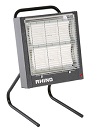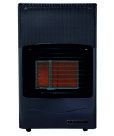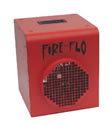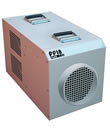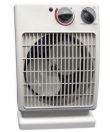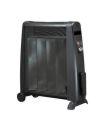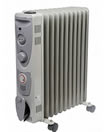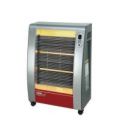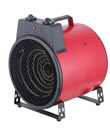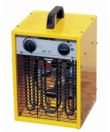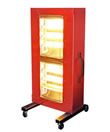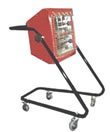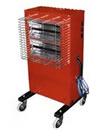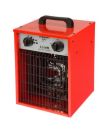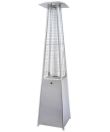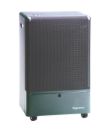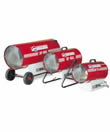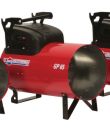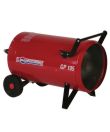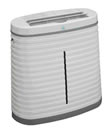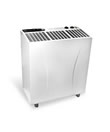Portable Heaters and Dehumidifiers
London Cool provide a wide range of heating equipment and specialist climate control products ranging from 2.5kW to 152kW. Below is a complete list of all our products in the Heating category available from our distribution centre in the South East.
- 30.0kW fan heater - 3 phase
- Ideal for commercial applications, construction, warehouses and heat load tests
- 22.0kW fan heater (3 phase)
- Ideal for commercial applications, construction, warehouses and heat load tests
- 15.0kW fan heater (3 phase)
- Ideal for commercial applications, construction, warehouses and heat load tests
Heaters and Heating
A heater is any object that emits heat or causes another body to achieve a higher temperature. This can be to heat an object or heat air. An electric heater is an electrical appliance that converts electrical energy into heat. The heating element inside every electric heater is simply an electrical resistor, and works on the principle of Joule heating: an electric current flowing through a resistor converts electrical energy into heat energy. Radiant/Radiative heaters or 'space heaters' Radiant or radiative heaters contain a heating element that reaches a high temperature. The element is usually packaged inside a glass envelope resembling a light bulb and with a reflector to direct the energy output away from the body of the heater. The element emits infra-red radiation that travels through air or space until it hits an absorbing surface, where it is partially converted to heat and partially reflected. This heat directly warms people and objects in the room, rather than warming the air. This style of heater is most useful in an area that is unable to be kept with minimal airflow. They are also ideal for basements and garages since they are good at spot heating. They are an excellent choice for task specific heating. Convection heaters In a convection heater, the heating element heats the air next to it by conduction. Hot air is less dense than cool air, so it rises due to buoyancy, allowing more cool air to flow in to take its place. This sets up a constant current of hot air that leaves the appliance through vent holes and heats up the surrounding space. They are ideally suited for heating a closed space. They operate silently and are a good choice where heating is required for long periods of time or if left unattended. Fan heaters or 'forced convection heaters' A fan heater is a variety of convection heater that includes an electric fan to speed up the airflow. This reduces the thermal resistance between the heating element and the surroundings, allowing heat to be transferred more quickly. This type of heater is a good choice for quick heating of enclosed spaces. 'Mechanical' or 'forced' ventilation is used to control indoor air quality. Excess humidity, odours, and contaminants can often be controlled via dilution or replacement with outside air. Heat recovery ventilation systems employ heat exchangers to recover some heat from exhausted air, to preheat the incoming outside air
Heatpumps
Heat pumps = Using air conditioners to heat Heat pumps are an integral part of air-conditioning technology. Heat pumps transfer heat from one environment to another via refrigerant. In cooling mode, heat pumps transfer the heat in an enclosed area (room, industrial process) to the outside air, resulting in a cooling of the area in question. This is the role that heat pumps play in common refrigeration and air conditioning systems. Heat pumps, however, also allow this process to be reversed. They can pump heat extracted from the outside air indoors, allowing indoor environments to be heated as well as cooled using the same technology. Heat pump efficiency Heat pumps offer numerous advantages as a heating solution. The same systems used to cool can also be used to heat, resulting in less initial investment and simplicity in operation and maintenance. They / Heat pumps also have an important advantage in the area of efficiency. Unlike fossil-fuel based heating systems, heat pumps extract available heat from the outside air. Heat pumps offer efficiency gains on the order of 3:1 and higher, compared to electrical heating. Thus for every unit of energy consumed by the heat pump, three or more units of heat are gained. Heat pump comfort Heat pumps in combination with inverter technology offer unparalleled indoor heating comfort and process efficiency. Heat pumps can extract heat energy from the outside air even on the coldest days of winter. Heat pump systems are capable of meeting exacting industrial heating and cooling requirements as well as of providing comfortable and efficient indoor heating.
Dehumidification
De-humidifiers dry the air without cooling it. They work like a normal air conditioner, except that a heat exchanger is placed between the intake and exhaust. In combination with convection fans they achieve a similar level of comfort as an air cooler in humid areas, but only consume about a third of the electricity. They are also preferred by those who find the draft created by air coolers discomforting. Air conditioners automatically act as dehumidifiers when they chill the air and thus need to handle the accumulated water as well. Some models use the condensing coil and fan to evaporate the accumulated water into the outdoor air, while normal units simply allow the water to collect in a tank. Some air conditioning units need to be connected to a drain.
Dehumidifiers
A dehumidifier is an appliance that reduces the level of humidity in air, usually for health reasons, as humid air can cause mold and mildew to grow inside homes, which has various health risks. Very high humidity levels are also unpleasant for human beings, and can cause unsightly condensation. Dehumidifiers are useful in a variety of situations including new buildings, and buildings which have been subject to flooding.


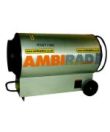

Flame_Gas_Patio_Heater.jpg)
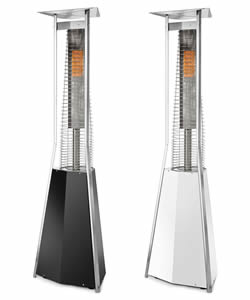
.jpg)
.jpg)
.jpg)

